The journey of The Graph has been nothing short of remarkable since its inception in 2018. Founded by visionary developers Yaniv Tal, Brandon Ramirez, and Jannis Pohlmann, The Graph was born out of a necessity to provide developers with direct access to blockchain data.
The mission of The Graph is clear and ambitious: to make public data accessible to everyone. Since its launch, The Graph has been steadily growing and making significant strides toward fulfilling this mission.
Join us as we delve into the evolution of The Graph and explore the milestones it has achieved along the way.

2018: Where it all started
The Graph made its debut on the Ethereum blockchain in 2018, thanks to the efforts of Yaniv Tal, Brandon Ramirez, and Jannis Pohlmann.
The vision and motivation behind The Graph were truly inspiring, leaving us in awe of its potential. The founders recognized a pressing need for a protocol that would simplify access to blockchain data, and their innovative approach has had a profound impact on the industry. If you're curious to learn more about their original vision and the development of this groundbreaking protocol, you can read their first blog post here:
https://medium.com/graphprotocol/introducing-the-graph-4a281b28203e
2019: Hosted Service and Graph Explorer launch
At Graph Day in 2019, The Graph launched its Hosted Service and Graph Explorer, enhancing the developer experience and facilitating the onboarding of Ethereum ecosystem projects. Graph Explorer simplifies data discovery and integration into dApps with features such as:
-
A playground for data introspection and query execution
-
Logs for processed events and errors
-
Atomic updates with zero downtime deployments
-
A dashboard for managing subgraphs and access tokens
-
A version switcher for managing subgraph versions
-
GitHub authentication for individual and organization accounts
Additionally, new details about the decentralized network design and specifications for a hybrid decentralized network were shared, with more updates to come in a future post.
2020: The Graph Network initiates
By 2020, The Graph achieved a major milestone with its Mainnet Launch. Transitioning from a testnet environment to a fully functional mainnet marked a crucial step towards widespread adoption and real-world applications. This pivotal moment underscored The Graph's readiness to support a growing ecosystem and meet the demands of developers and users alike.
The Graph's hosted service processed over 4 billion monthly queries for applications like Uniswap, CoinGecko, and Synthetix, providing data on token prices, trade volumes, and liquidity. Their ultimate goal was to eliminate single points of failure in APIs, servers, and databases by building The Graph Network—a decentralized marketplace of Indexers and Curators. This network enabled serverless apps, relying on incentivized nodes instead of single servers, and allowed participants to earn income for data services, reducing data monopolies.
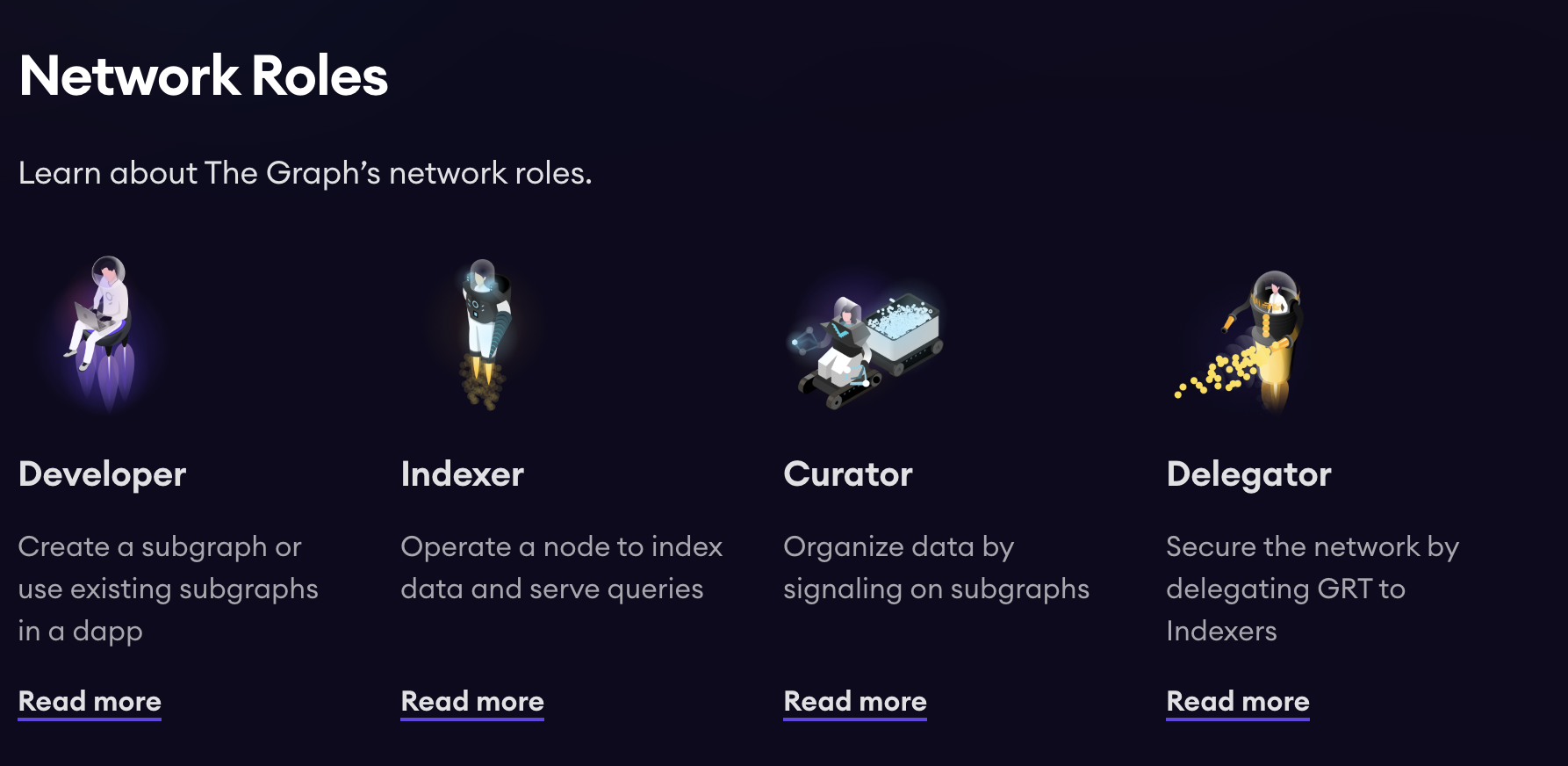
To ensure the economic security and data integrity of the network, The Graph launched the Graph Token (GRT), a work token central to the network's functionality.
You can read more here:
https://thegraph.com/blog/the-graph-grt-token-economics/
By October 2020, governance of The Graph network transitioned to an independent entity known as The Graph Foundation, with Eva Beylin appointed as its director.
2021: Growing and growing, let’s say hello to Subgraph Studio
After a successful Mainnet launch on Ethereum, The Graph began evaluating integration with additional Layer 1 blockchains. Starting with a few queries in January 2019, The Graph's daily query volume skyrocketed to approximately 30 million by June 2020 and continued to grow, reaching over 675 million daily queries in 2021. Between May 2020 and April 2021, The Graph's hosted service processed over 110 billion queries. Monthly query volumes also saw significant growth, with 11.7 billion in January, 14.5 billion in February, 19 billion in March, and 20.3 billion in April, averaging a 20% month-over-month increase.
To make the developer’s experience relevant**, Subgraph Studio** was launched, allowing developers to deploy and curate subgraphs permissionlessly to earn query fees. This marked one of the first large-scale curation markets on Ethereum.
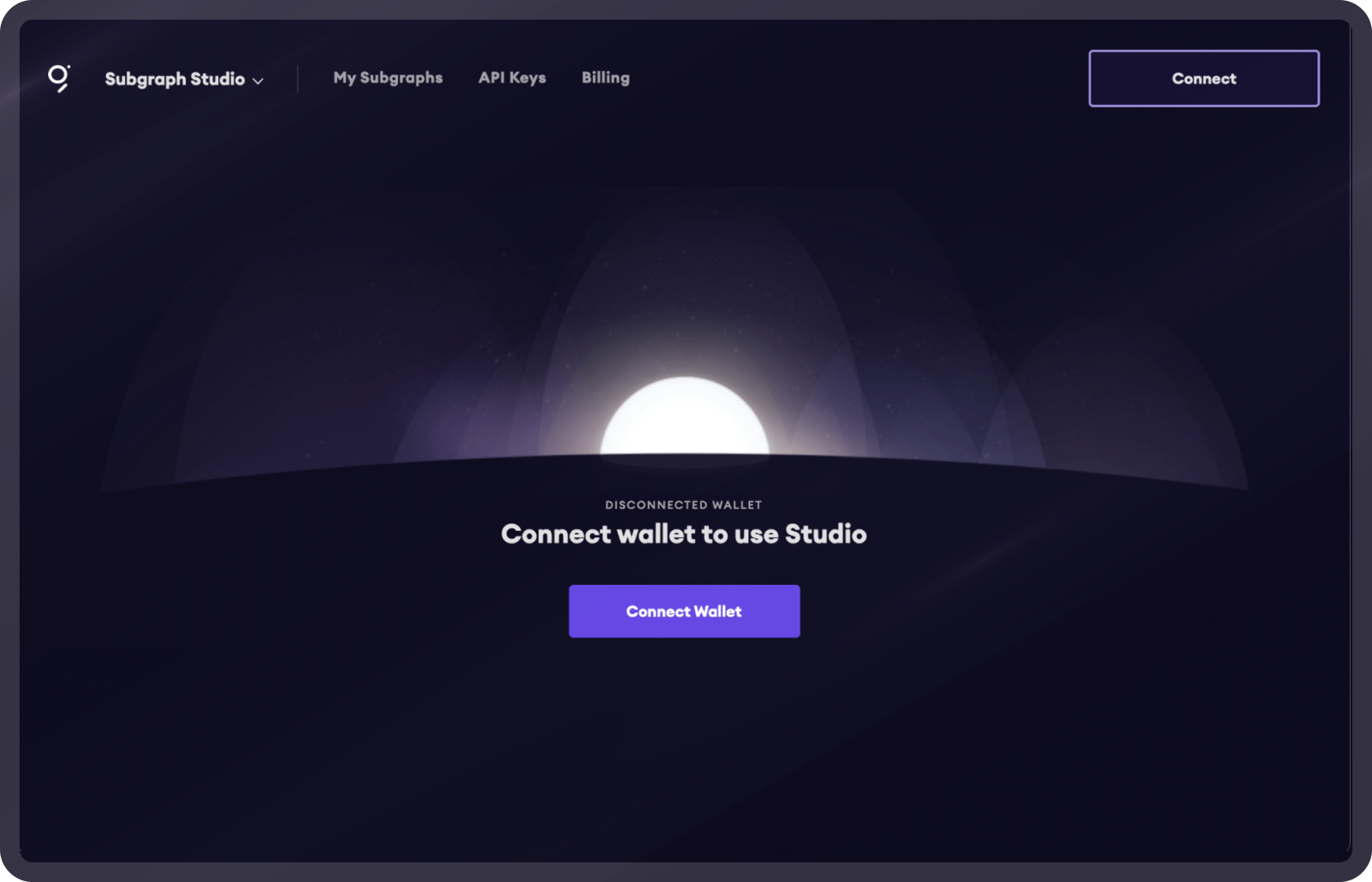
2022: Leveled Up!
The Graph added five whole developer teams to improve how you find and use data on the blockchain, but that’s not all:
-
StreamingFast Joins the Party: This tech whiz company used to offer centralized data, but they saw the future in decentralization and are now helping build a better Graph.
-
Introducing Substreams: Substreams take things even further by enabling massively parallelized streaming data. Substreams can be combined and aggregated in powerful new ways to feed data into subgraphs or end-user applications in a fraction of the time.
-
The Community Gets Empowered: The Graph launched The Graph AdvocatesDAO, the community governing body that oversees membership and contributions of the Graph Advocates Program and community grants.
2023: The Graph’s new era
The upgrade Indexer was a fallback mechanism to ensure that every single subgraph that upgrades to the network can be served by the network. It’s another way by which The Graph ecosystem will provide maximal support to developers and enable everyone to outsource their indexing needs to the network, without stopping support for critical infrastructure that tens of thousands of developers rely on today.
While The Graph is primarily known for data indexing, it possesses attributes necessary for effectively integrating AI throughout its stack. Semiotic Labs developed open-source AI tools for Indexers, streamlining complex decision-making processes to enhance protocol efficiency and increase Indexers' revenue. A pilot project has been initiated to grant users access to The Graph's extensive data through natural language queries. Looking ahead, The Graph served as a trusted source of verifiable data for training new AI models.
The sunrise of The Graph's new era marks the inception of a transformative chapter, where the Graph Network caters to diverse data needs and user requirements, fostering a thriving ecosystem of data utilization. This era sees The Graph accommodating web3's expanding array of use cases, including verifiable data, new query languages, and support for Large Language Models (LLMs), while enhancing support for builders, optimizing protocol efficiency, and constructing a comprehensive knowledge graph.
The roadmap is structured around five fundamental objectives, each accompanied by key milestones aimed at propelling research and development efforts and fostering the ecosystem's sustained growth in the years ahead.
See the roadmap here:
https://thegraph.com/blog/the-graph-roadmap-new-era/
2024: Sunrise of Decentralized Data!!
The Graph embarked on a multichain expansion, now supporting over +40 of the most widely used blockchains for subgraph integration. Recent technical upgrades, such as the Indexer upgrade, have facilitated support for popular chains and layer-2 solutions like Base, Near, Scroll, and zkSync. Additionally, developers can now easily upgrade subgraphs on previously supported chains such as Arbitrum, Avalanche, Celo, Ethereum, Fantom, Gnosis, Optimism, Polygon, and more.
This expansion empowers tens of thousands of developers on these chains to utilize The Graph's decentralized network for faster syncing times and lower costs, joining renowned dApps like Vela, Loopring, Snapshot, Art Blocks, and many others.
The recommitment to the Sunrise of Decentralized Data, declared in October 2023, has now materialized, affirming The Graph's status as the standard for open data in the decentralized internet. With the completion of Sunray, onboarding to The Graph Network has become more accessible than ever, featuring enhancements like support for more chains, free queries, and improved billing. These advancements further establish The Graph as the go-to solution for querying data in web3.
See this plan here:
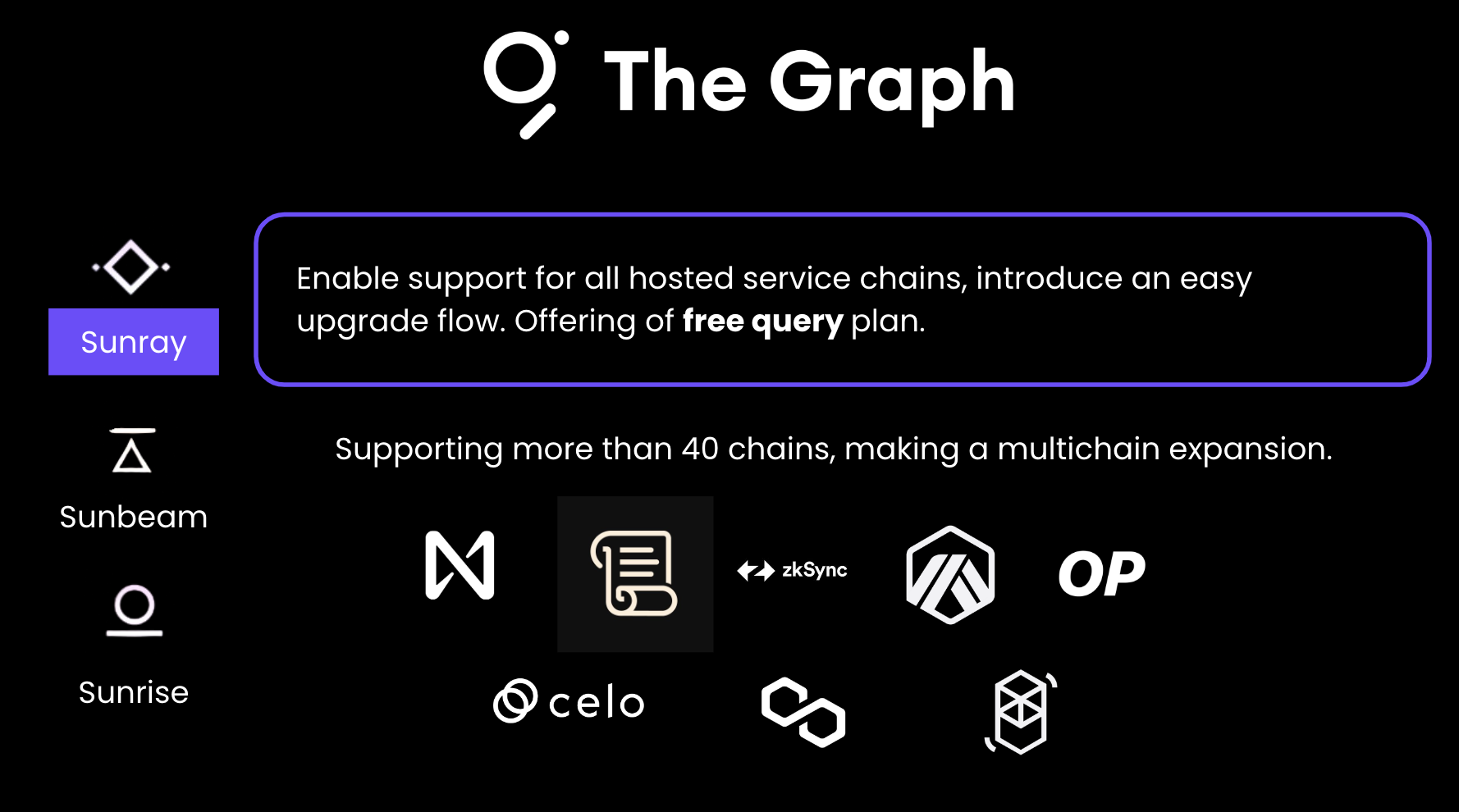

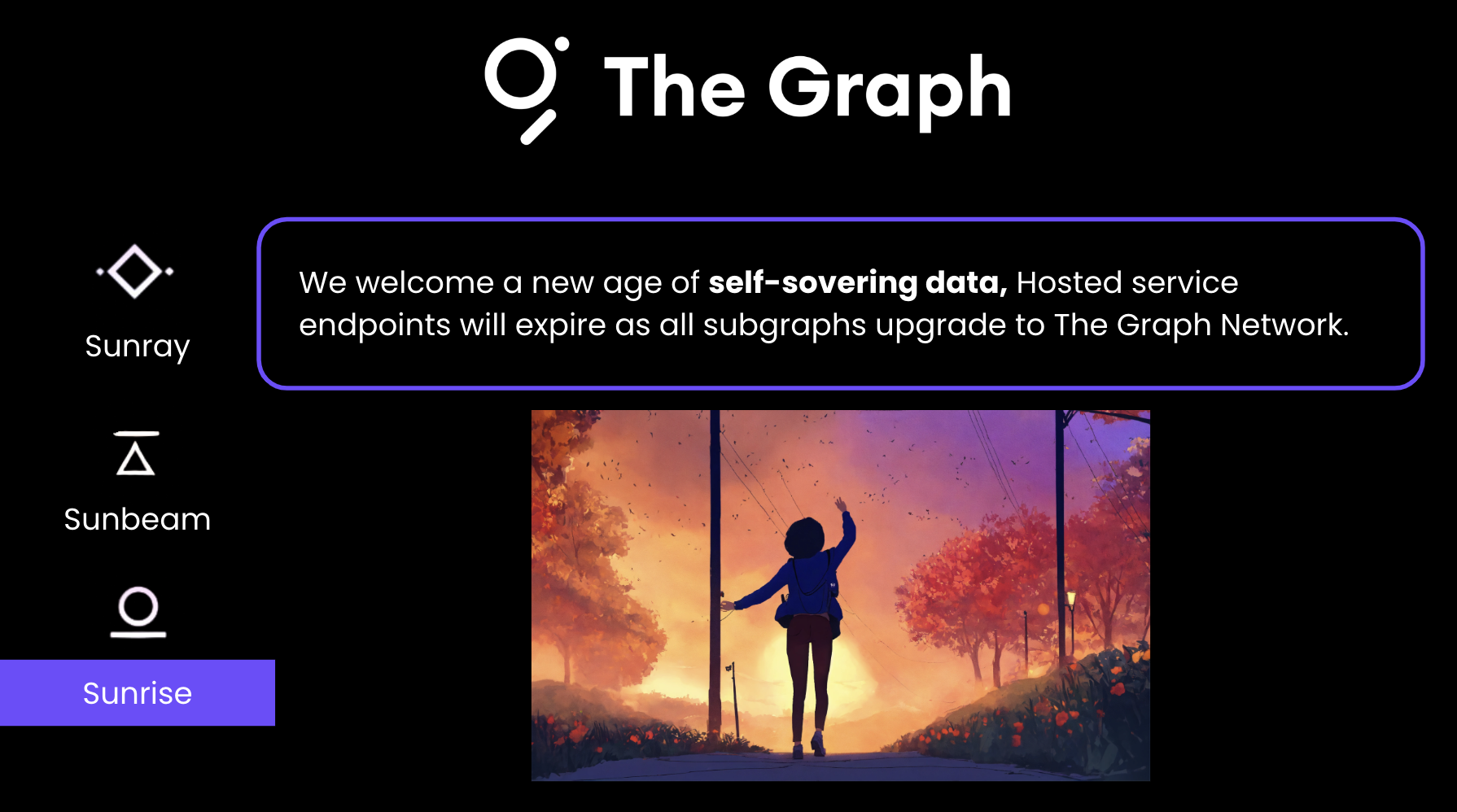
The Graph as AI Infrastructure
With the introduction of two groundbreaking AI services, The Graph is ushering in a new era of decentralized AI. These services harness The Graph's vast historical data and resilient decentralized infrastructure to provide a trustworthy and censorship-resistant platform for deploying and executing AI models. By leveraging these services, dApps can explore innovative avenues for integrating AI into their applications, opening a new chapter in the intersection of AI and web3 data.
Read more about Semiotic’s work towards AI in their whitepaper here:
https://storage.thegraph.com/ai-inference-agent-service.pdf
aaaaand, eso es todo, that’s all✨
Thank you for coming this far, don't forget to subscribe!



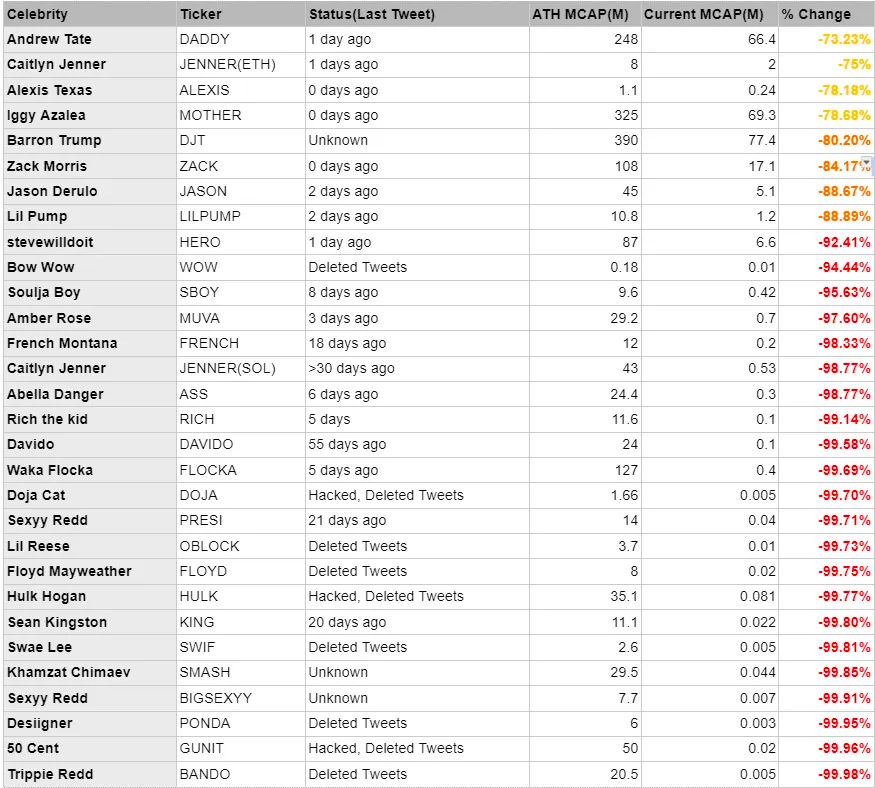

评论 (0)